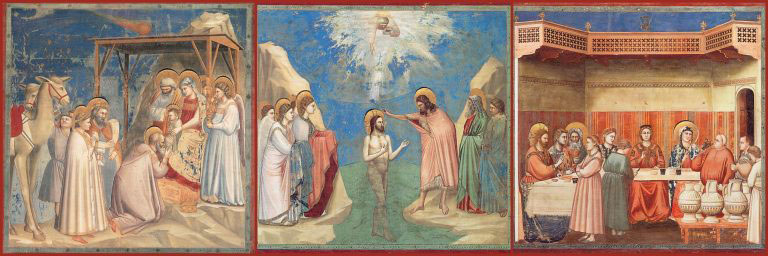
Epiphany is Jan 6 and is one of the essential feasts in the Christian year. The essence of Epiphany is found in 2 Timothy 1:10: “And now he has made all of this plain to us by the appearing of Christ Jesus, our Savior.”
The English word “Epiphany” comes from the Greek word epiphaneia, which means “appearing” or “revealing.” Epiphany focuses on God’s self-revelation in Christ, the divinity of Christ.
The Epiphany celebration remembers the three miracles that manifest the divinity of Christ. The celebration originated in the Eastern Church in AD 361, beginning as a commemoration of the birth of Christ. Later, additional meanings were added – the visit of the three Magi, Christ’s baptism in the Jordan River with the voice from heaven that identifies Jesus as God’s son, and his first miracle at the wedding in Cana.
The Roman Catholic Church in Sylva, NC planned to install the above art in their baptisty to celebrate the miracles. From their website:
“The works selected are high-quality reproductions of frescoes painted by late medieval Italian painter Giotto di Bondone. Giotto was one of the first medieval artists to depict his subjects in a more realistic, natural style, breaking away from the earlier tradition of more stylized figures.”
“In our display, the Baptism of the Lord is central, being aligned with the baptismal font, to remind us that all those baptized in the sacred waters of this font are baptized into the Lord, to share in his Passion and Resurrection. To the left, the Adoration of the Magi is a reminder for us to give our homage to Christ who is the Lord of all, no matter our ethnicity or nationality. And on the right, the scene from the Wedding at Cana brings to our mind the words of instruction spoken by our Blessed Mother to the servants, which we have emblazoned on our baptistery wall: “Do whatever He tells you” (Jn 2:5).”
